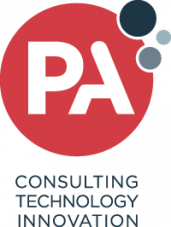In 2013, the Edison Electric Institute, a national advocacy group representing America's investor-owned utilities, issued a vitally important report on the uncertain future for the electric sector.
The conclusions were stark: "While the threat of disruptive forces on the utility industry has been limited to date, economic fundamentals and public policies in place are likely to encourage significant future disruption to the utility business model."
It was an important document. By that point, it was obvious that the revenue destruction experienced by European utilities would eventually come to the U.S. as solar costs improve and more states promote distributed energy. The term "utility death spiral" was getting kicked around a lot. But the EEI report was the first time leaders of the utility industry had succinctly described the broad range of challenges facing traditional power companies.
Three years later, the disruptive forces identified by EEI -- customer-sited distributed generation, demand-side management, low natural-gas prices, slowing demand growth -- are more pressing than ever before. And if a recently leaked planning document from the lobbying group is any indication, the industry is quickly moving beyond threat identification and toward proactive solutions.
The document, first published by the Huffington Post in March, features a long list of corporate goals for the nation's investor-owned utilities to prioritize in 2016. With strong, customer-centric language on distributed energy and grid modernization, the document proves just how seriously utilities are thinking about the future.
"If you look at 2012 and 2013, it was a recognition of where the market is going. Now the next step is figuring out what to do about it. The overall takeaway from this document is that utilities are now pursuing the transition -- all while communicating the value of the grid," said David Groarke, an energy expert with PA Consulting Group.
The goals are broken up into seven different categories: grid security, grid modernization, clean energy, customer-focused solutions, environmental policy, tax policy and educational outreach.
According to Brian Wolff, EEI's executive vice president for public policy, the organization expanded its emphasis on distributed energy and a proactive approach to EPA carbon regulations.
"If it doesn't fit into clean energy, grid modernization or a focus on the customer, we're not doing it anymore," said Wolff. "We really homed in and want to stick to those three practice areas."
With around 150 U.S. utility members representing a broad range of perspectives on the energy transition, surely it took a long time to agree on this new focus?
"It took about zero minutes for us to agree," said Wolff. "We really try to socialize these goals in advance and shape them before they are presented to the CEOs."
There are a few standout priorities that signal how large investor-owned utilities will position themselves in the coming year.
The first is a call for power providers to take a greater ownership stake in distributed generation.
"Utilities now own more than 60 percent of all solar in the U.S. We know how to scale and scale fast," said Wolff. "We're asking, 'What can we do this year to deploy three times the solar we did last year?'"
This is an indication that utilities will propose more pilot programs in 2016 allowing them to own and operate behind-the-meter storage and rooftop solar.
"Utilities clearly want to play in every part of the new development -- to take a leading role in implementation and ownership," said PA's Groarke.
Another top priority is improving rate design for distributed energy. The document doesn't explicitly call for an end to solar net metering, but it does advocate for "DG policies that are transparent, avoid cost-shifting, recognize the value of the grid, and address fixed-cost recovery."
Wolff said that the utility industry is open to lots of ideas about how to restructure rates -- "We just need to make sure that we’re updating rate designs with fairness in mind for all customers."
Finally, the document also embraces the Clean Power Plan by encouraging member utilities to develop "workable plans" to meet federal carbon regulations.
"We're not looking at this through a political prism. We're doing this anyway," said Wolff. "Regardless of the Clean Power Plan, our customers want clean energy." This echoes what top utility CEOs have been saying publicly over the last year.
When it comes to real-world policy implementation at state utility commissions, there will still be plenty of disagreement between investor-owned utilities and their distributed energy competitors. But EEI's 2016 priorities show that America's biggest utilities are in the midst of a meaningful transition.
"This document outlines a shift from a protectionist stance to one focused on growth and investment. This is a bellwether for the industry," said Groarke.
Wolff described the document's significance in the same way: "It’s an acknowledgement of the transformation that we’re going through. This is a rapidly changing industry, and we really need to address those changes."




